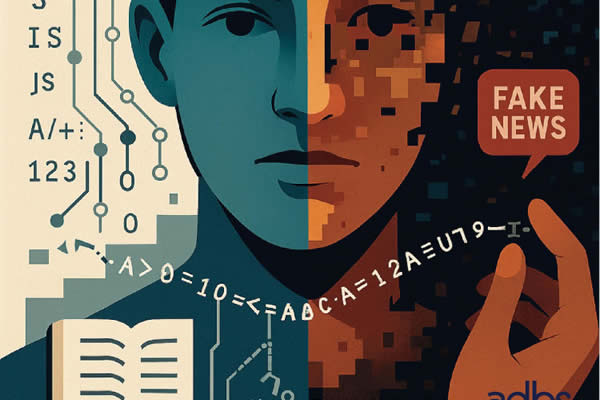This summary presents the key points of the chapter ‘From bytes to bylines – A history of AI in journalism practices’ published in Histories of Digital Journalism, focusing on the central role of data in shaping journalism’s evolution. The chapter explores the historical relationship between journalists and technology, tracing the journey from early computer-assisted reporting to the integration of artificial intelligence (AI). It shows how data has been both a driver of innovation and a source of ethical and professional dilemmas, illustrating journalism’s ability to adapt in an era of rapid technological change.
Introduction
Data is the cornerstone of journalism’s evolution, shaping its relationship with technology. The rise of artificial intelligence (AI) relies heavily on data to drive prediction and classification, transforming journalistic workflows and decision-making. This chapter traces the historical interplay between journalists and technology, highlighting how data has fuelled both innovation and ethical dilemmas in modern AI-driven journalism.
A prehistory: Uncovering the stories behind the data
The first use of data and computer in journalism dates back to 1952, when CBS used the Univac computer to predict election results. This marked the beginning of a slow embrace of the potential of data, constrained by the limitations of early technology. By the 1980s, the proliferation of personal computers and tools such as spreadsheets fostered computer-assisted reporting (CAR), enabling journalists to uncover hidden narratives in datasets. This was associated with an image of excellence in (investigative) journalism.
From the big data bang to the AI-driven age
The 1990s saw the seamless integration of computers into news production workflows, especially with advances in software and the increasing accessibility of the Internet. During this period, the use of computerised databases became more widespread, allowing journalists to improve efficiency and undertake large-scale investigations even in smaller organisations. The launch of the World Wide Web in 1993 marked a transformative moment, opening new avenues for data-driven investigative journalism and audience engagement.
The advent of big data enabled sophisticated data storytelling through tools such as data visualisation. Early pioneers, such as Adrian Holovaty, demonstrated how the integration of data and technology could produce groundbreaking projects such as crime mapping. Computational journalism emerged, fusing data science with traditional reporting methods and emphasising the critical role of data in deciphering complex social patterns.
Between the fear and promise of disruptive technology
AI technologies, which rely heavily on large datasets, have become an integral part of journalism, from news generation to audience personalisation. Tools such as ChatGPT use pre-trained data to generate content, reflecting both the promise of efficiency and the ethical challenges of data-driven automation. The reliance on data has sparked debates about misinformation, transparency and maintaining journalistic integrity.
Conclusion
Journalism’s adaptation to technological advances underscores the indispensable role of data in shaping its trajectory. While AI and data-driven methods promise to increase efficiency and innovation, they require careful navigation of ethical challenges.
The emergence of a new era of generative AI highlights the need to protect journalistic values from misinformation and reinvent transparency to restore public trust. It contributes to journalism’s continued ability to adapt to technological developments. It also calls for redefining transparency amid the complexities of technology and journalism, where decisions, whether human or technological, often remain encapsulated in black boxes.
Dierickx, L., & Lindén, C.-G. (2024). From bytes to bylines: A history of AI in journalism practices. In T. Tofalvy & I. Vobič (Eds.), Histories of digital journalism (1st ed., p. 13). Routledge. https://doi.org/10.4324/9781003492436




